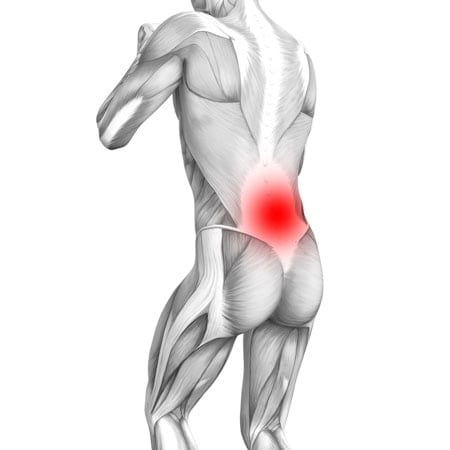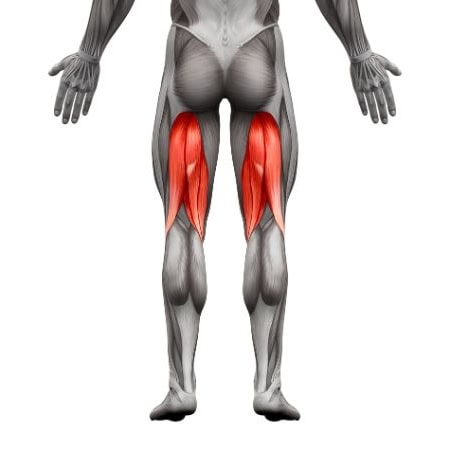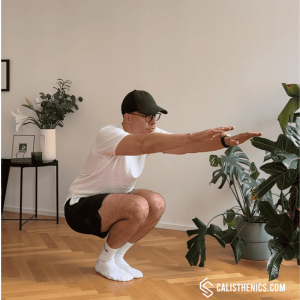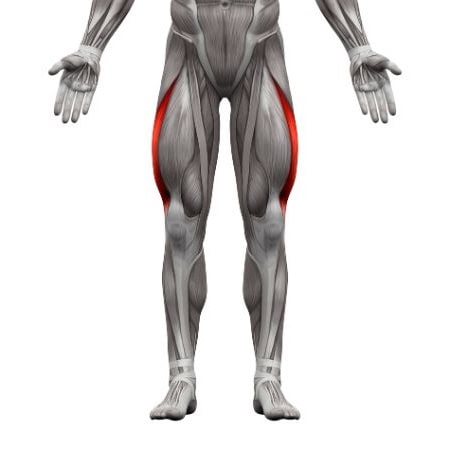Narrow Stance Squat
How to do Narrow Stance Squat?
The narrow stance squat is a variation of the traditional squat, performed with the feet closer together. This exercise places more emphasis on the quadriceps compared to wider stance squats, while still engaging the glutes, hamstrings, and core. It’s an effective lower-body movement that requires no equipment, making it a great choice for bodyweight training routines or warm-ups.
Steps to Perform the Exercise:
- Set Your Feet: Stand with your feet close together, about hip-width apart or narrower, with your toes pointing straight forward.
- Engage Your Core: Tighten your core muscles and pull your shoulders back to maintain an upright posture throughout the movement.
- Begin the Squat: Push your hips back slightly, then bend your knees to lower your body into a squat. Keep your chest up and back straight as you descend. Your knees should track over your toes.
- Lower Until Comfortable: Aim to squat until your thighs are parallel to the ground or lower if your mobility allows, but don’t compromise form. Make sure your heels remain flat on the floor throughout the movement.
- Return to Standing: Push through your heels to return to the starting position, fully extending your legs and squeezing your glutes at the top.
Tips for the proper execution of Narrow Stance Squat
Keep Your Chest Up: Focus on maintaining an upright torso to avoid leaning forward, which can put strain on your lower back.
Knee Alignment: Make sure your knees track directly over your toes as you squat. Avoid letting them collapse inward (valgus collapse).
Weight Distribution: Keep the weight evenly distributed across your midfoot and heels. Your heels should stay firmly planted on the ground throughout the movement.
Engage Your Core: Brace your core as you squat to stabilize your spine and prevent your lower back from rounding.
Control the Descent: Lower yourself slowly and in a controlled manner. Avoid bouncing at the bottom of the squat, as this can stress your knees.
Muscles worked when doing Narrow Stance Squat
- Primary Muscles: Quadriceps.
- Secondary Muscles: Glutes, hamstrings, calves (gastrocnemius, soleus), core (rectus abdominis, transverse abdominis, obliques), lower back (erector spinae).
Primary Muscle(s):
Secondary Muscle(s):

Lower back

Hamstring
Equipment needed for Narrow Stance Squat
No equipment needed for this exercise.
Adjust the difficulty of Narrow Stance Squat
How to make Narrow Stance Squat harder?
How to make Narrow Stance Squat easier?
How to make Narrow Stance Squat harder?
To make Narrow Stance Squat harder:
-
Increase Reps or Sets: Perform more repetitions or add extra sets to increase the intensity of your workout.
-
Add a Hold or Pulse: Pause at the bottom of the squat for 2-3 seconds before standing up, or add small pulses at the bottom to challenge your muscles.
-
Single-Leg Variation: Try performing a narrow stance pistol squat (a one-legged squat) for an advanced challenge. You can hold onto a support as you build strength for this variation.
-
Slow the Tempo: Slow down the eccentric (lowering) phase of the squat to 3-5 seconds, increasing time under tension and making the exercise more difficult.
How to make Narrow Stance Squat easier?
To make Narrow Stance Squat easier:
-
Decrease Depth: If you’re new to squatting or have limited mobility, start with shallow squats and gradually increase the depth as you gain strength and flexibility.
-
Use a Support: Hold onto a chair, wall, or railing for balance and assistance if you're struggling with stability or control.
-
Squat to a Box or Bench: Perform squats onto a box or bench, which provides a safety net and helps you build strength and confidence in the movement.



